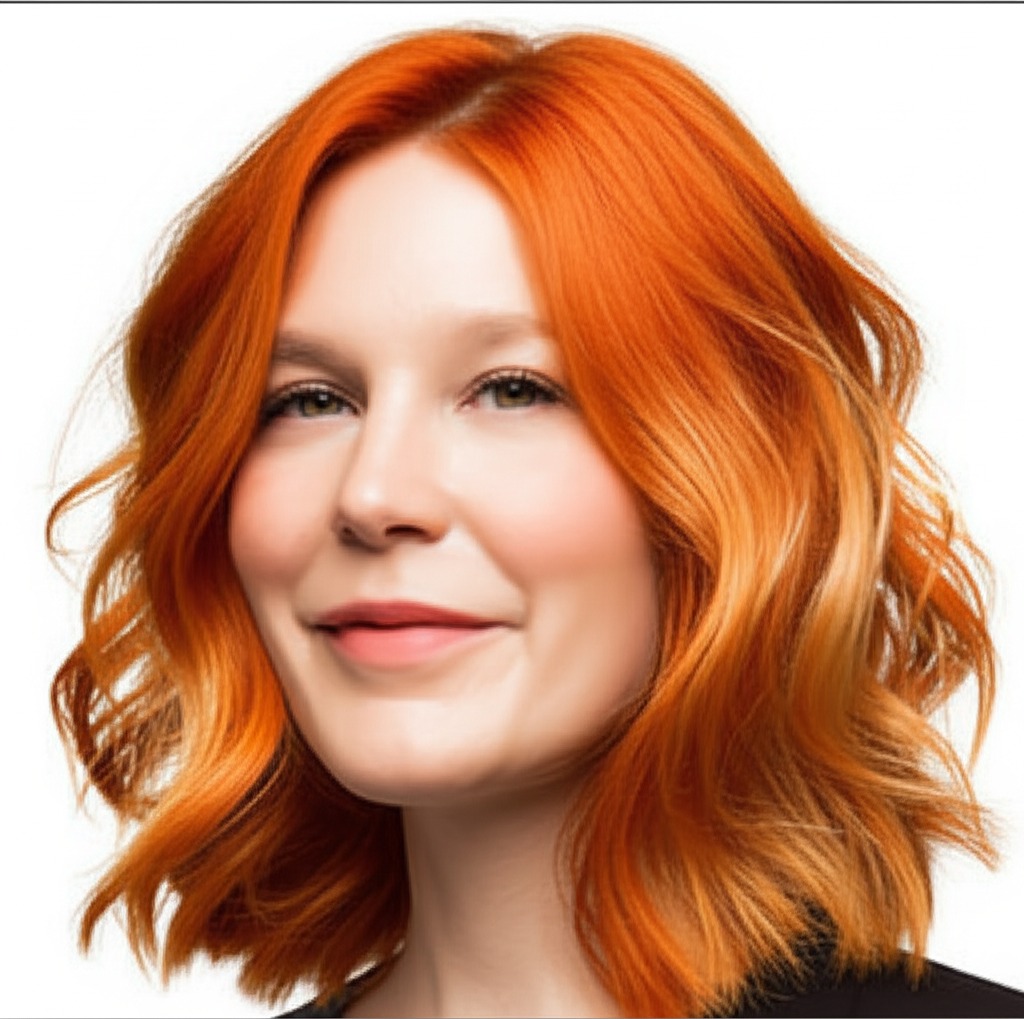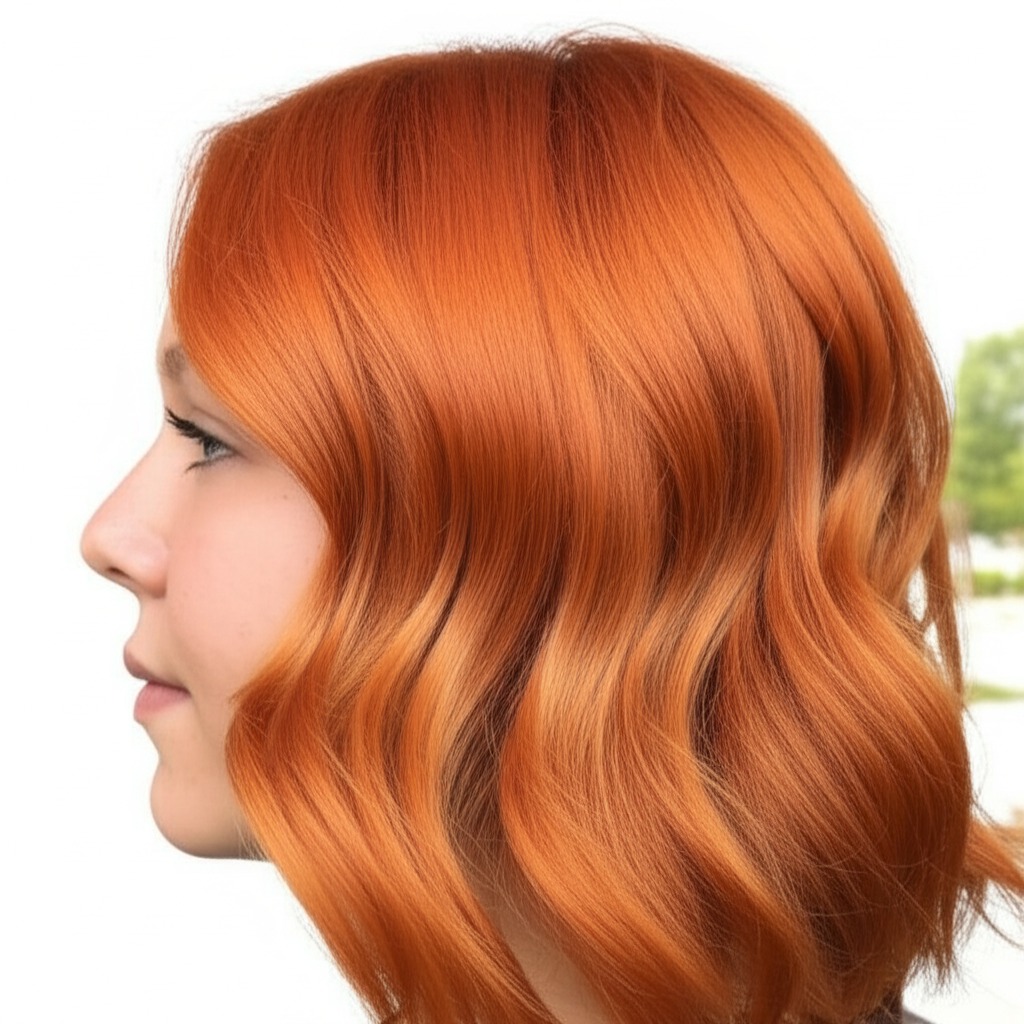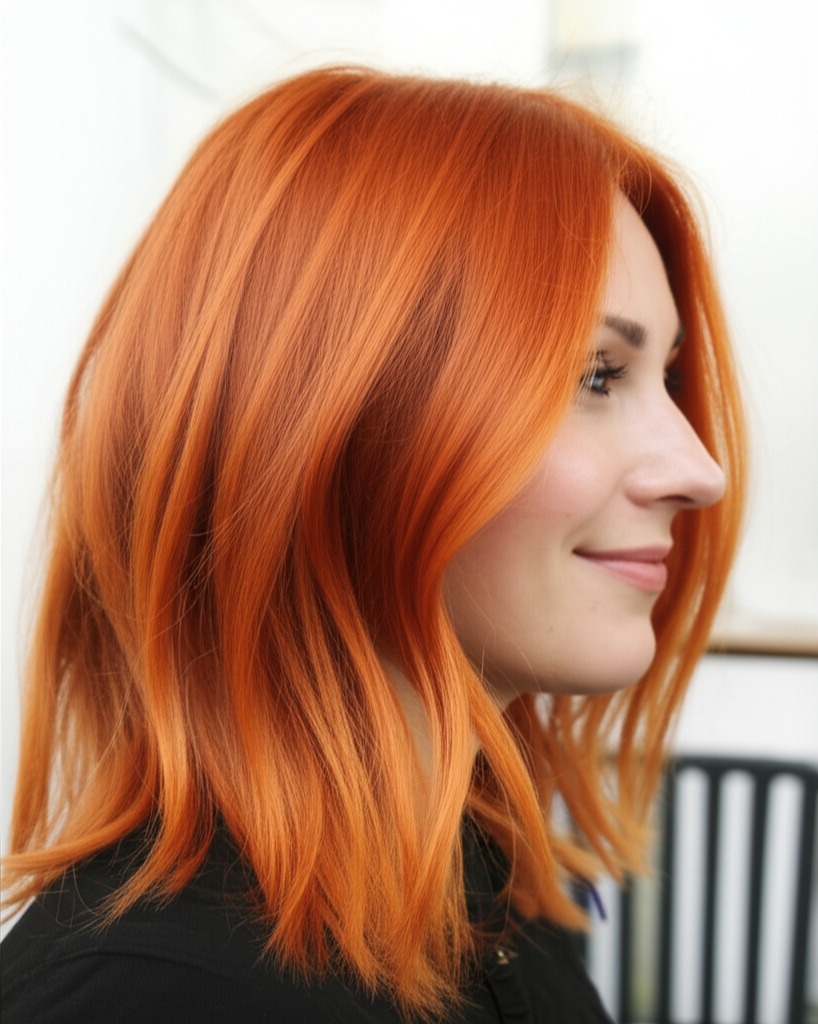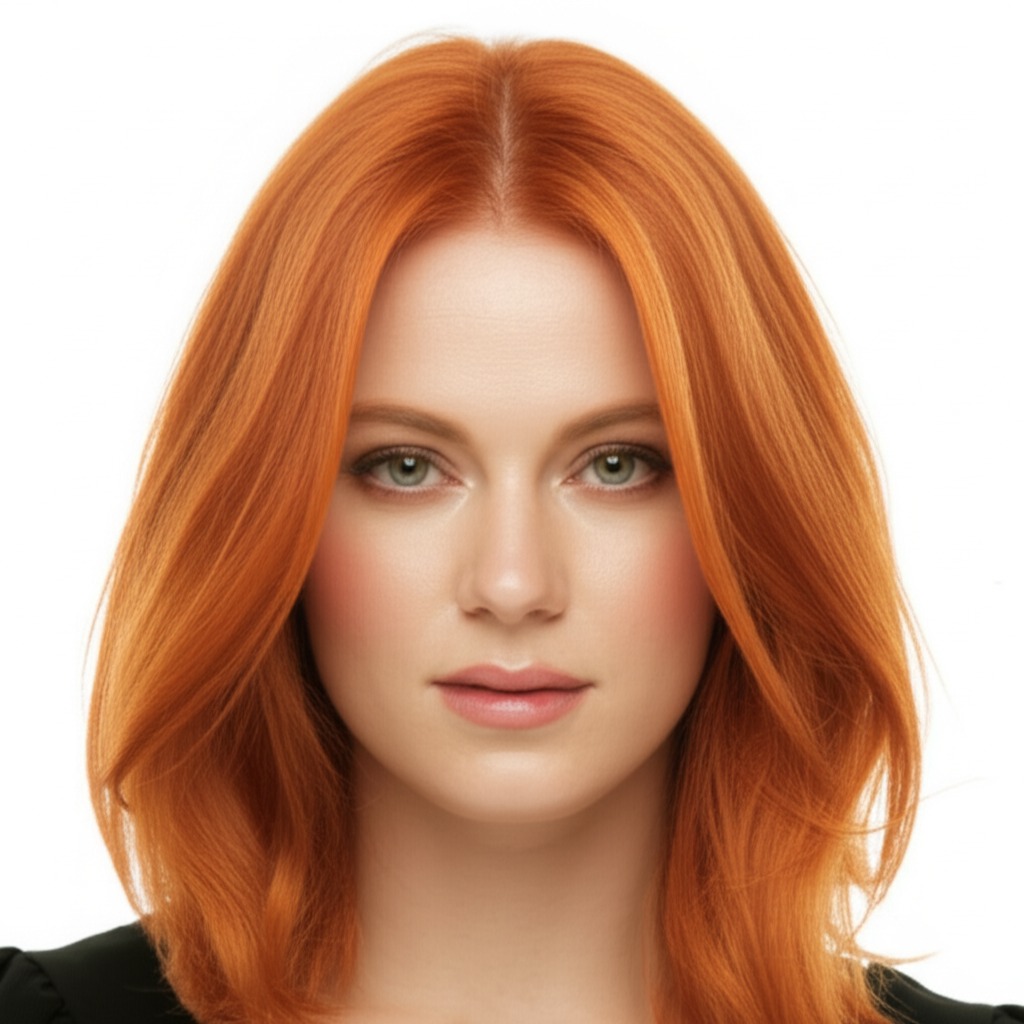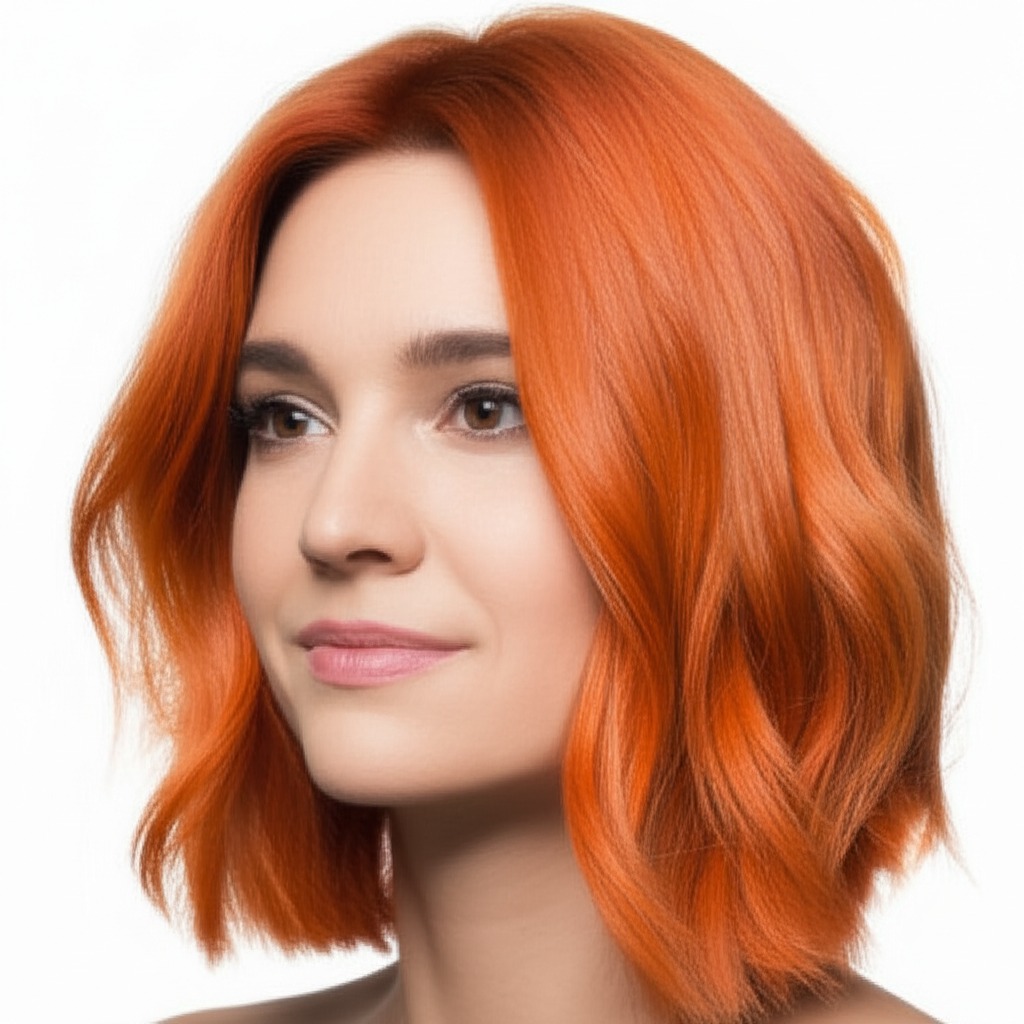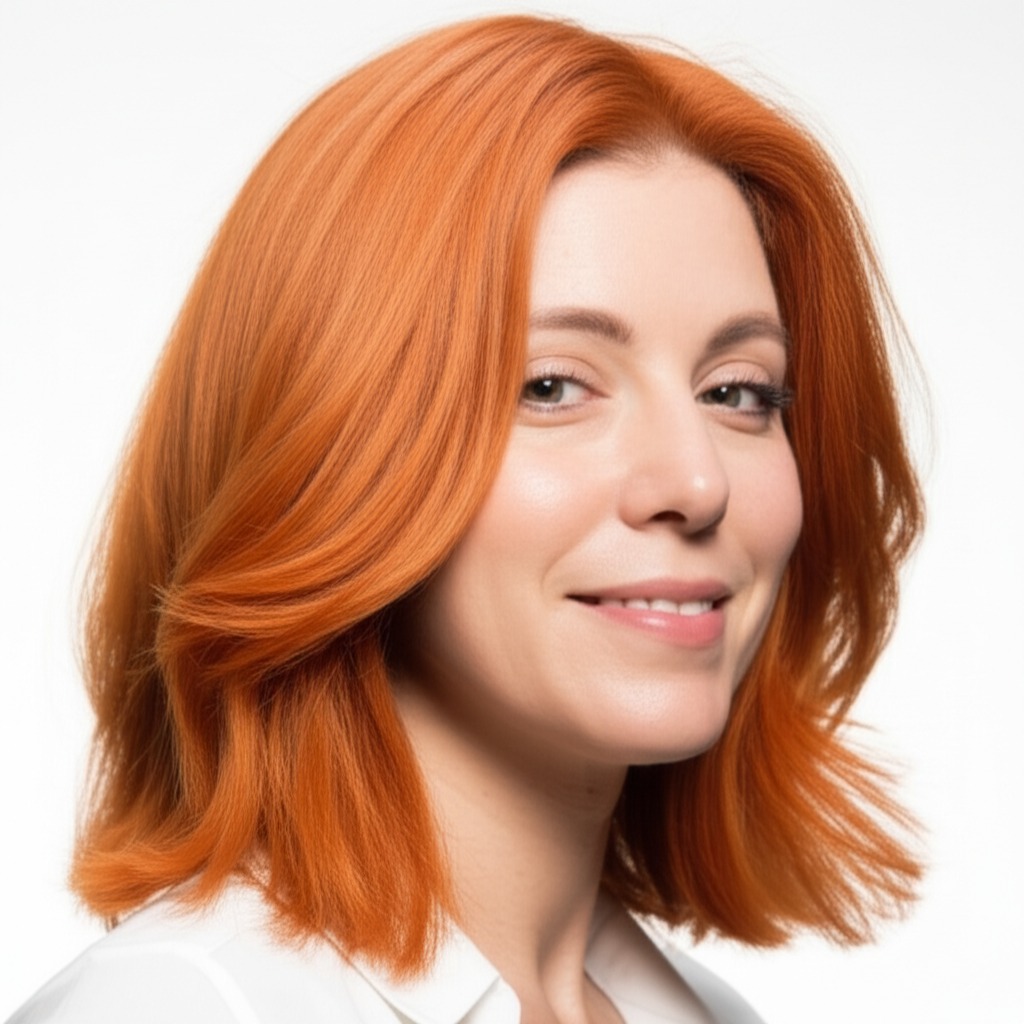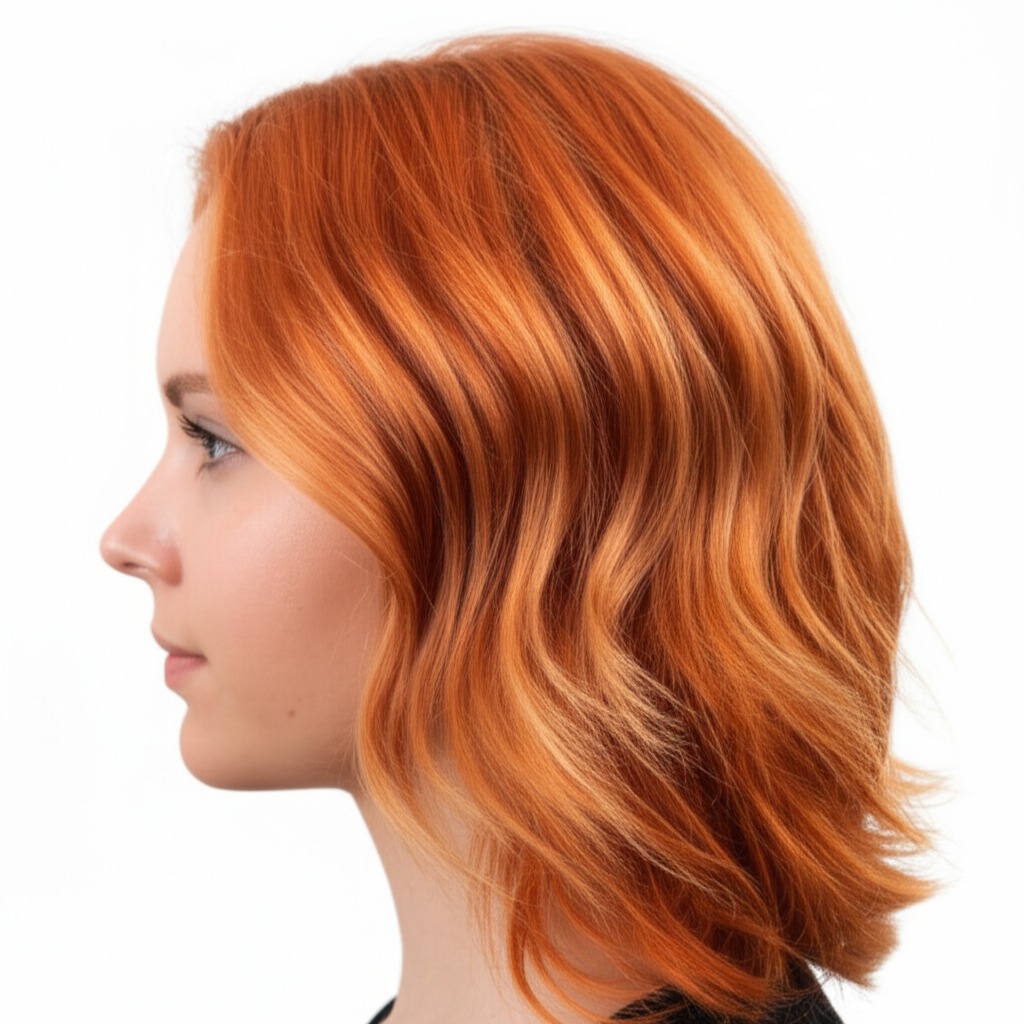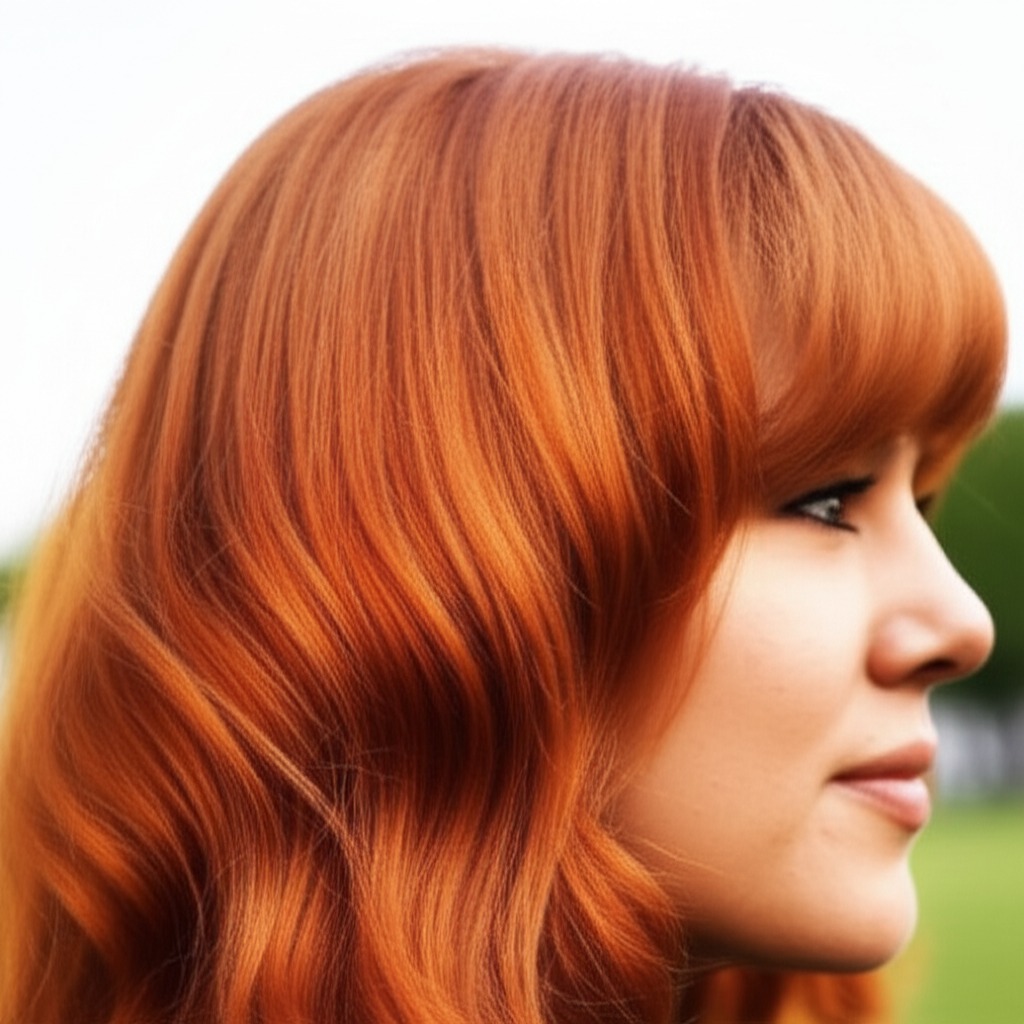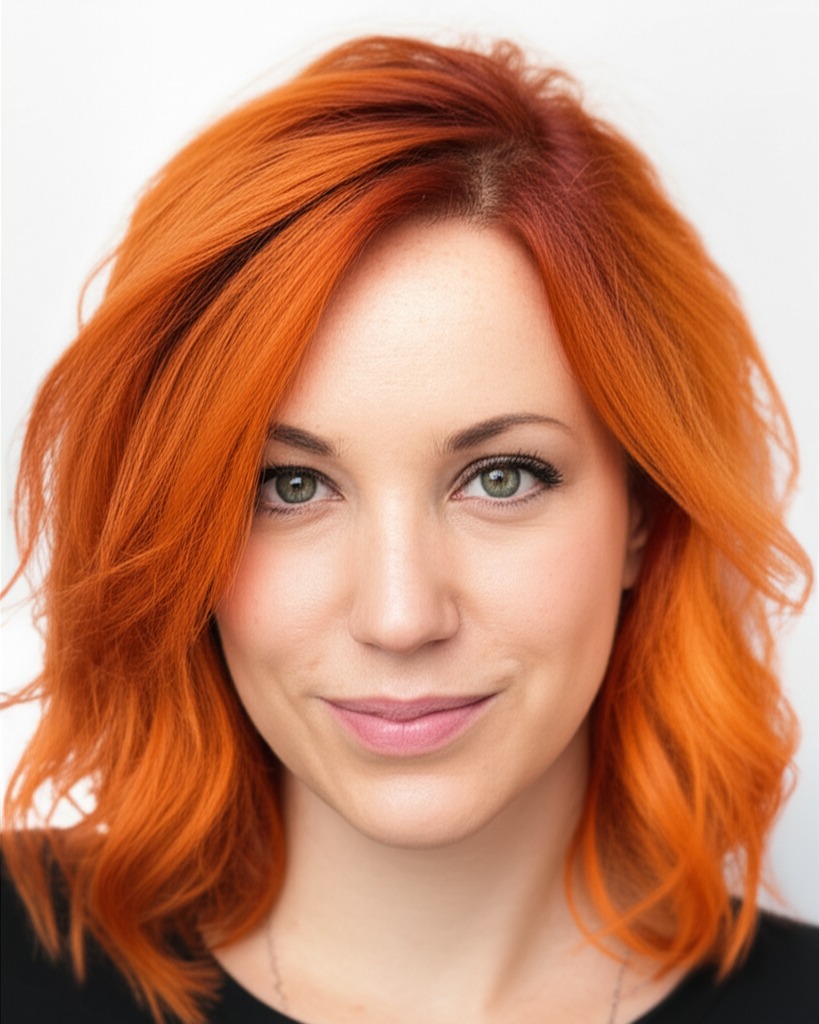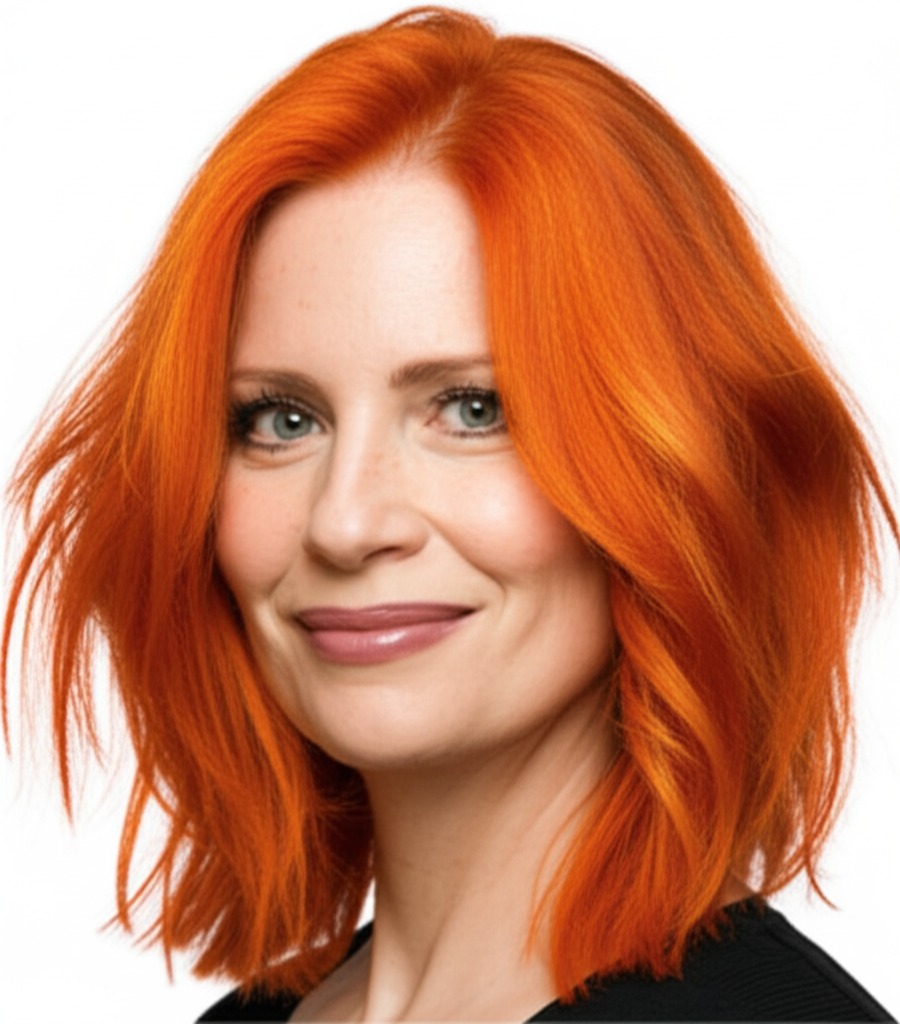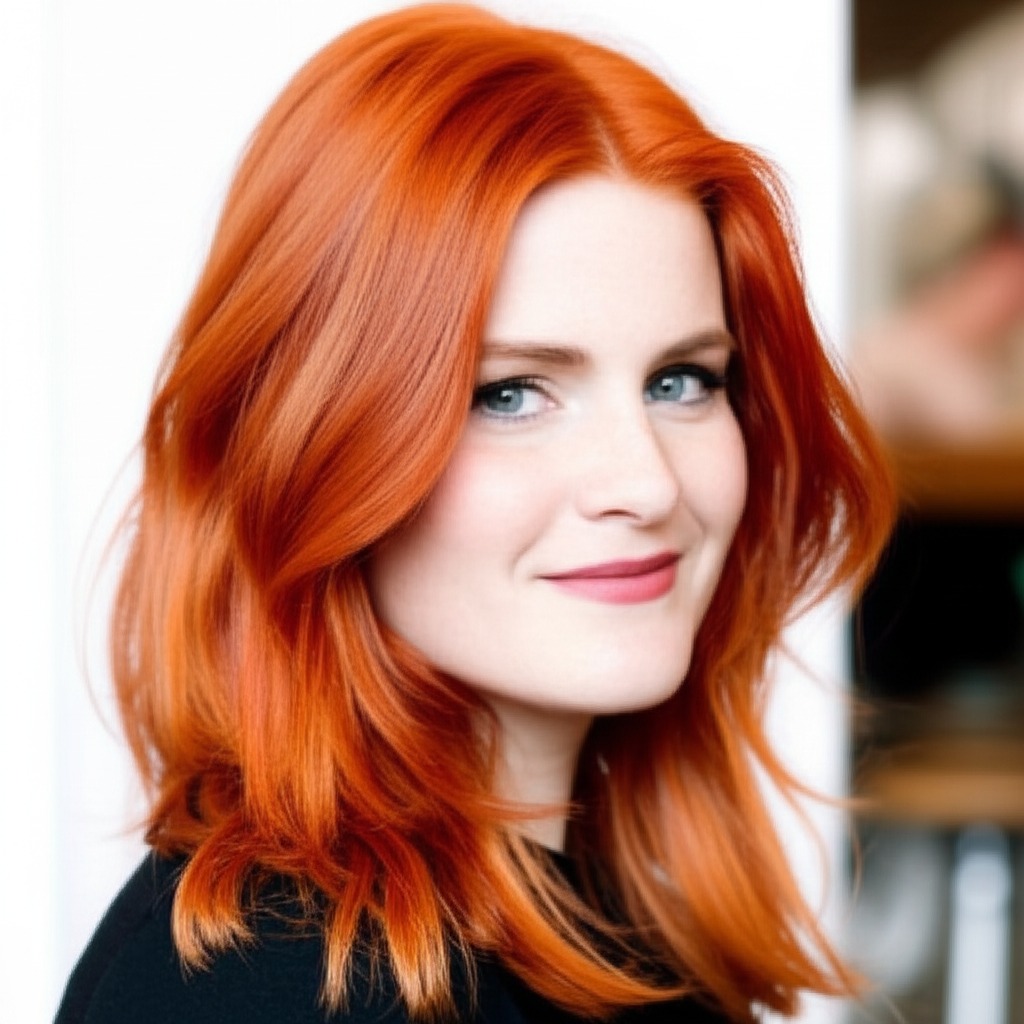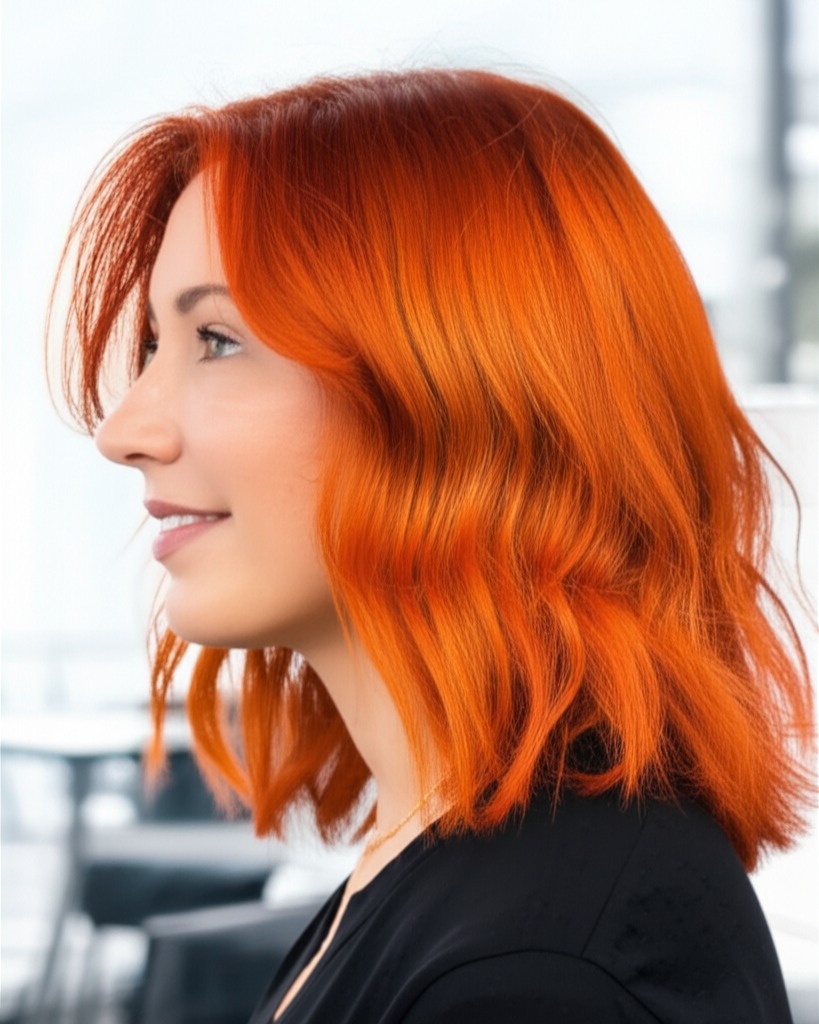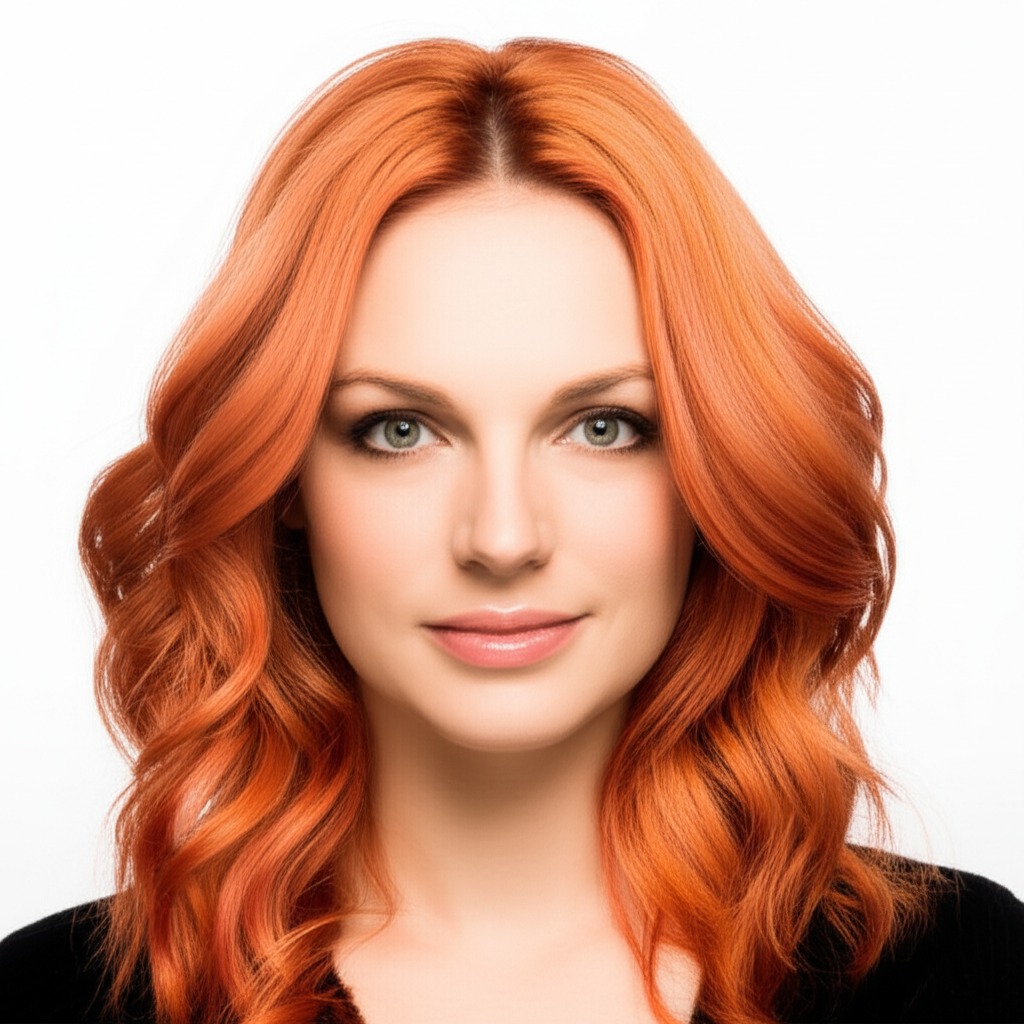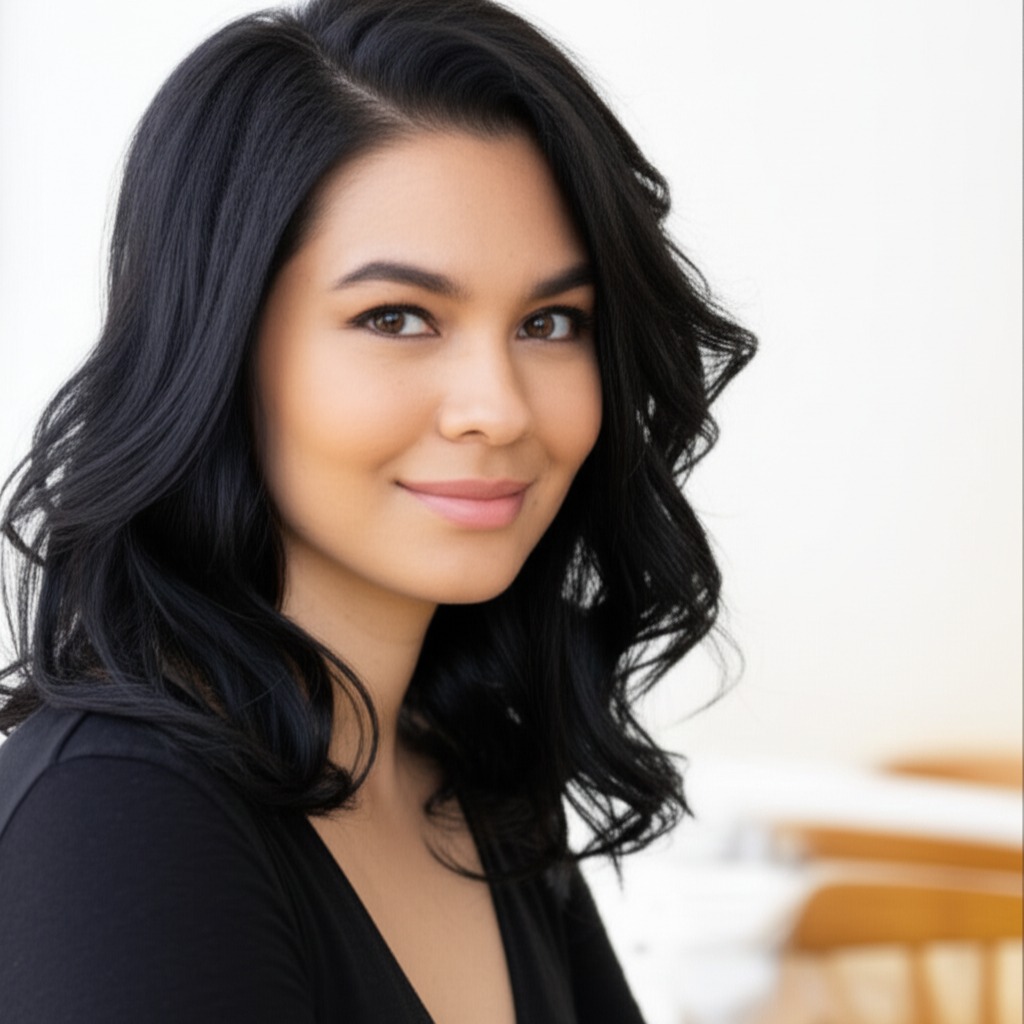#Embrace the Glow: Your Guide to Soft Copper Hair Color
Soft copper hair is having a moment – and for good reason! It's warm, inviting, and adds a beautiful radiance to your look. But achieving that perfect, glowing copper isn’t just about picking a box dye off the shelf. This guide will break down everything you need to know about soft copper hair color, from understanding its nuances to keeping it looking gorgeous for longer.
#1. Defining Soft Copper: Warmth & Depth
Soft copper is all about that cozy, autumnal vibe. It’s not a bright, fiery orange; instead, think of the shimmer of polished pennies or the warmth of autumn leaves just starting to turn. Here's what makes it unique:
- Undertone: This color leans warm. That means it has golden and reddish notes – key for complementing warmer skin tones (more on that later!).
- Depth/Levels: Soft copper typically sits between levels 7-9 on the hair level scale. Level 7 is a medium blonde, while level 9 approaches a very light, almost pastel shade. The “soft” aspect comes from avoiding extremes – it’s not a super dark or incredibly light copper. A good stylist will tailor the exact level to your natural color and desired brightness.
- Variations: You'll see variations like "rose copper" (with more pinkish tones) and "honey copper" (with richer golden hues). Discuss these with your stylist!
#2. Who Does Soft Copper Flatter?
Choosing a hair color that truly enhances your features is crucial. Here’s how to determine if soft copper is right for you:
- Skin Tone & Undertone: Soft copper shines on people with warm skin tones – think olive, golden, or peachy complexions. If your skin has yellow or golden undertones (look at the veins in your wrist - do they appear greenish or blueish?), this color will likely harmonize beautifully. Those with cooler skin tones (pink/blue undertones) might find it washes them out unless expertly blended.
- Eye Colors: Copper complements a wide range of eye colors! Green, hazel, brown, and even some shades of blue can look stunning against soft copper hair. The warmth enhances the natural sparkle in your eyes.
- Natural Level Starting Point: The closer you are to a level 7-9 naturally, the easier (and less damaging) it will be to achieve soft copper. Those with darker starting levels (levels 1-4) will require more processing and potentially multiple sessions to reach the desired lightness. Be realistic about what's achievable without compromising hair health!
#3. Technique Options: Finding Your Perfect Application
The application technique significantly impacts how your soft copper looks and feels.
- Single Process: This is a full, even color application. Best for those with already light to medium brown hair who want an all-over wash of warmth.
- Highlights/Lowlights: Adding highlights (lighter pieces) creates dimension and brightness. Lowlights (darker pieces) add depth and prevent the look from being too flat. A good stylist can strategically place these to frame your face.
- Babylights: These are very fine, subtle highlights that mimic natural sun-kissed streaks. They create a soft, blended effect perfect for those wanting a gradual color change.
- Gloss/Toner: A gloss or toner is essential after lightening (or even with single process) to refine the copper tone and add shine. It's like the final polish on your new hair!
- Balayage-Effect vs Solid: Balayage creates a softer, more natural look because it’s hand-painted onto the hair, resulting in less harsh lines of demarcation. A solid color application is more uniform but can appear blockier if not expertly blended.
#4. Maintenance & Longevity: Planning for Success
Keeping your soft copper looking vibrant requires commitment and a little planning.
- Wash Frequency: Limit washing to 2-3 times per week to preserve the color's richness.
- Toner Refresh: Copper tones tend to fade, often turning brassy (more on that later!). Plan for toner refreshes every 4-8 weeks, depending on how quickly your hair fades and how much vibrancy you want.
- Root Growth Pacing: If you’ve gone lighter than your natural color, root growth will be noticeable. Discuss with your stylist whether to blend the roots or embrace a more grown-out look (which can still be stylish!).
- Budget/Time Planning: Soft copper typically requires multiple salon visits initially (especially for darker starting levels). Expect to spend $150-$400+ per visit, and factor in regular toner appointments. At-home maintenance products will also add to the ongoing cost.
#5. Seasonality & Pairing with Cuts: Style it Right!
Soft copper's warmth makes it incredibly versatile for different seasons and hairstyles.
- Bob: A blunt bob or a soft, layered bob looks fantastic with soft copper – showcasing its shine and dimension.
- Lob (Long Bob): A lob allows for more movement and layering, which beautifully complements the color’s depth.
- Long Layers: Long layers create a flowing, ethereal look that enhances the warmth of soft copper.
- Pixie: A pixie cut can be surprisingly chic with soft copper, especially if you want to show off your face shape.
- Seasonal Tweaks: In summer, consider adding brighter highlights for a sun-kissed effect. In winter, deepen the tones slightly for a richer, cozier look.
- Event/Occasion Picks: Soft copper is perfect for daytime events, weddings (especially outdoor or rustic themes), and even professional settings – as long as it’s well-maintained!
#6. At-Home Care: Protecting Your Investment
Proper at-home care is essential for keeping your soft copper looking its best.
- Sulfate-Free Shampoo: Sulfates strip color, so switch to a sulfate-free shampoo specifically designed for colored hair.
- Clarifying Cadence: While sulfates are out, occasional clarifying shampoos (every 4-6 weeks) can remove buildup and restore shine – but use sparingly!
- Heat Protection: Always use a heat protectant spray before using any hot styling tools (blow dryer, straightener, curling iron).
- Color-Safe Styling Products: Opt for products labeled as “color-safe” to avoid fading or discoloration.
- Product Checklist: Sulfate-free shampoo, color-safe conditioner, heat protectant, hair mask (for moisture), leave-in conditioner.
#7. Common Pitfalls: Avoiding Color Woes
Let's address some common challenges and how to prevent them.
- Brassiness: Copper can easily turn brassy due to mineral deposits in water or oxidation. Use a purple shampoo/conditioner occasionally (but not too often, as it can tone the color too much).
- Banding: This occurs when the color doesn’t process evenly, creating noticeable lines on your hair. A skilled stylist will perform a strand test and ensure even application.
- Patchiness: Uneven coverage is usually due to inadequate lightening or uneven product distribution. Proper technique and thorough rinsing are key.
#8. Pros & Cons: Weighing the Options
Pros:
- Warmth & Radiance: Soft copper adds a beautiful, flattering glow.
- Versatility: Works well with various hair lengths and styles.
- Complimentary to Many Skin Tones: Especially those with warm undertones.
Cons:
- Maintenance Burden: Requires regular salon visits for toning and root touch-ups.
- Fade Risk: Copper tones are prone to fading, especially if not properly cared for.
- Potential Damage: Lightening processes can damage hair; proper care is essential.
#9. Salon Consultation Script: Setting Expectations
Before you commit, a thorough consultation with your stylist is vital. Here are some prompts to guide the conversation:
- “I’m interested in soft copper hair color. Can you assess my natural level and determine if it's achievable without excessive damage?”
- "What technique would you recommend for my hair type and desired look?"
- "Can we do a strand test to see how my hair reacts to the color?"
- “How often will I need to come in for touch-ups and toning?”
- "What at-home care products do you recommend to maintain the color's vibrancy?"
- "Let’s discuss realistic expectations regarding fade time and potential brassiness."
#10. FAQs About Soft Copper Hair Color
- Can I achieve soft copper on dark brown hair? Yes, but it will require multiple sessions of lightening, which can be damaging. Be prepared for a longer process and higher cost.
- Will soft copper make my skin look orange? Not if done correctly! A skilled stylist will adjust the tone to complement your skin’s undertones.
- How long does soft copper last? The color itself typically lasts 6-8 weeks, but the vibrancy fades faster without proper care. Toner refreshes are essential every 4-8 weeks.
- Is soft copper damaging to my hair? Any lightening process can cause some damage. A good stylist will use gentle techniques and prioritize your hair's health.
- Can I do this at home? While possible, achieving a professional-looking result is difficult without experience and the right products. It’s best left to the pros!
- What if my soft copper turns too brassy? Use a purple shampoo/conditioner occasionally to neutralize brassiness. Don't overuse it, as it can make your hair look dull.
With careful planning and proper care, you can rock gorgeous, glowing soft copper hair that turns heads for all the right reasons!
